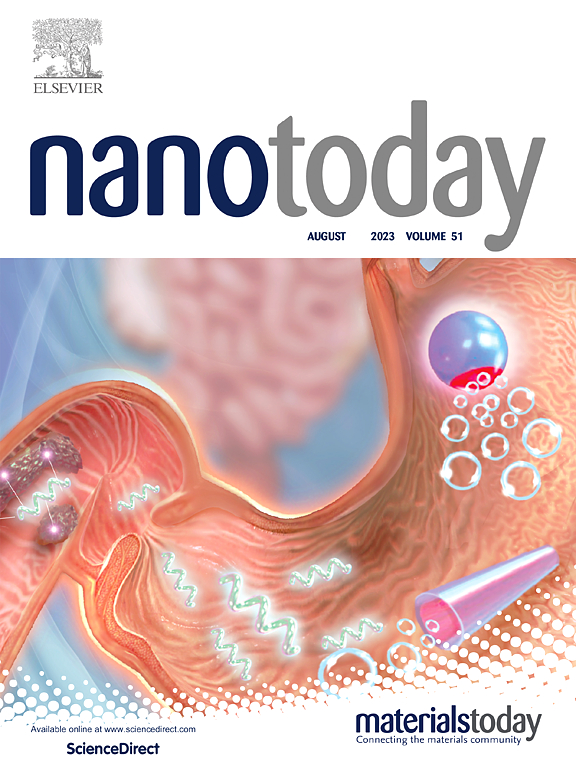Self-assembled copper-phenolic nanoparticles for antimicrobial therapy by triggering Fenton reaction and cuproptosis-like bacterial death
IF 13.2
1区 材料科学
Q1 CHEMISTRY, MULTIDISCIPLINARY
引用次数: 0
Abstract
The increasing prevalence of antibiotic-resistant bacteria poses a significant threat to global health. This study introduces poly(ethylene glycol)-copper-tannic acid nanoparticles (PCT NPs) as a novel therapeutic strategy for treating bacterial infections. PCT NPs, synthesized via self-assembly of Cu²⁺, tannic acid, and poly(ethylene glycol), exhibit pH-responsive release of Cu²⁺, which generates reactive oxygen species (ROS) and depletes glutathione (GSH) in bacterial cells, leading to cuproptosis-like bacterial death. PCT NPs also demonstrate strong adhesion to bacterial surfaces, enhancing their ability to deliver Cu²⁺ directly to bacterial cells. In vitro experiments demonstrate strong bactericidal activity against MRSA and P. aeruginosa. In vivo studies in murine models of skin and lung infections confirm the efficacy of PCT NPs in reducing bacterial load and promoting wound healing. This work highlights PCT NPs as a promising non-antibiotic alternative for combating deep-seated bacterial infections.
自组装铜酚纳米颗粒通过触发芬顿反应和铜中毒样细菌死亡进行抗菌治疗
耐抗生素细菌的日益流行对全球健康构成重大威胁。本研究介绍了聚乙二醇铜单宁酸纳米颗粒(PCT NPs)作为一种治疗细菌感染的新策略。PCT NPs是由Cu 2 +、单宁酸和聚乙二醇自组装合成的,它表现出Cu 2 +的ph响应性释放,在细菌细胞中产生活性氧(ROS)并消耗谷胱甘肽(GSH),导致铜中毒样细菌死亡。PCT NPs还表现出对细菌表面的强粘附性,增强了它们直接将Cu 2 +传递到细菌细胞的能力。体外实验显示对MRSA和铜绿假单胞菌有较强的杀菌活性。小鼠皮肤和肺部感染模型的体内研究证实了PCT NPs在减少细菌负荷和促进伤口愈合方面的功效。这项工作强调了PCT NPs作为对抗深层细菌感染的有前途的非抗生素替代品。
本文章由计算机程序翻译,如有差异,请以英文原文为准。
求助全文
约1分钟内获得全文
求助全文
来源期刊

Nano Today
工程技术-材料科学:综合
CiteScore
21.50
自引率
3.40%
发文量
305
审稿时长
40 days
期刊介绍:
Nano Today is a journal dedicated to publishing influential and innovative work in the field of nanoscience and technology. It covers a wide range of subject areas including biomaterials, materials chemistry, materials science, chemistry, bioengineering, biochemistry, genetics and molecular biology, engineering, and nanotechnology. The journal considers articles that inform readers about the latest research, breakthroughs, and topical issues in these fields. It provides comprehensive coverage through a mixture of peer-reviewed articles, research news, and information on key developments. Nano Today is abstracted and indexed in Science Citation Index, Ei Compendex, Embase, Scopus, and INSPEC.
 求助内容:
求助内容: 应助结果提醒方式:
应助结果提醒方式:


